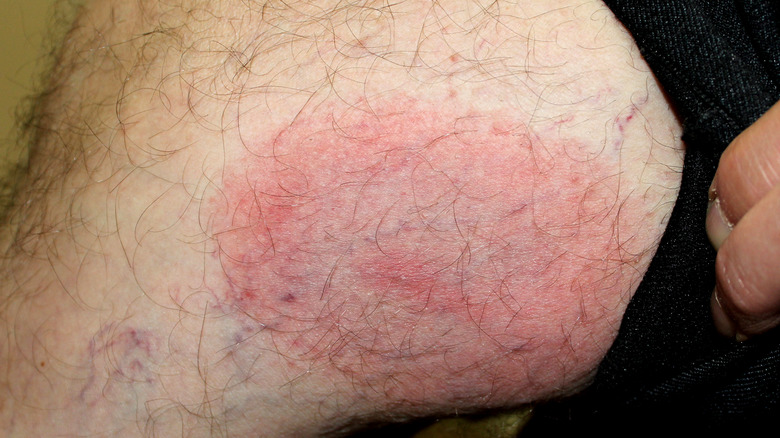This Is How To Tell If You've Been Bitten By A Tick
Bug bites can be irritatingly itchy, cause redness, or even a mark on your skin that will last a few days. Even though most of the time being bitten is more annoying than it is a serious cause for concern, all bug bites shouldn't be treated as equal. According to Everyday Health, the prevalence of ticks is growing in the United States. However, despite an increased number of reported tick bites, many of us are unaware of just how serious tick bite-related infections are to our overall health.
MayoClinic reports that some ticks are carriers of infectious bacteria that have been known to cause Lyme disease or Rocky Mountain spotted fever. Most often, a tick needs to be attached to the skin's surface for at least 36 hours to be able to transmit illness-causing bacteria. We get that even reading about ticks may make your skin crawl. But for the sake of your health, it is important to notice if you have been bitten by one of these small blood-sucking creatures.
The first way you can tell if you have been bitten by a tick is to check your entire body to see if they are still attached to the skin. Richard Ostfeld, a distinguished senior scientist at the Cary Institute of Ecosystem Studies in New York, tells Everyday Health that ticks are most often found on the backs of the knees, the armpits, the back of the neck, and the groin.
Look out for a bull's-eye shaped rash
"They like those tucked-away places where the skin is soft and where they can hide without being detected," he says. If you do spot a tick attached to your skin, then it is important to remove it quickly and as safely as possible. Mayo Clinic recommends using tweezers and removing the tick from where it is attached at the very base of your skin. Pull in an upward motion and wash your hands and the infected area with warm water and soap after you are done.
If you don't spot a tick attached to your skin but suspect you have been bitten, there are a few signs and symptoms to be extra aware of. Everyday Health reports skin rashes at the site of the bite, especially ones that are in the shape of a bull's-eye, are associated with the transmission of Lyme disease. There are also physical signs such as flu-like symptoms, muscles aches, or chills within a week to 10 days of the possible tick bite.
Ticks neither fly nor hop, claims Everyday Health. So if you want to lower your risk of getting a tick bite, cover up your skin when you are out enjoying nature. And if you suspect you have been bitten and are feeling any of the known symptoms of a tick bite, then it may help to schedule an appointment with your doctor to share your concerns and find the right diagnosis.


